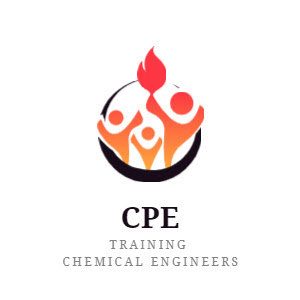Recently received a request from a professional to write about the fire load calculation, Hence writing this post upto my knowledge.
Basically, fire-load is the most required parameter while identifying the fire risk relevant to any building / structure.
It will help us to understand the heat liberation while a building / a material is completely burnt.
There shall be certain grading available according to the fire hazards involved based on the fire load. Currently i'm not aware of those gradings, i'll check in my network and would update here.
Fire load can be calculated based on the below formula:
(here i'll define the fire load for a chemical combustion)
Fire-load = Quantity of chemical x Calorific Value / Shop floor area
So, now the next query is What is Calorific value ?
If you can remember your +1 / +2 days, Calorific value shall be defined as Energy contained in a specific material, which can be measured by the heat generated / produced by complete combustion of material.
So, taking this as reference for measuring calorific value of a specific material, please don't burn any pharmaceutical product that you are handling, here we are not taking any responsibility for such events 😄
If you want to estimate the calorific value of a specific product, kindly prefer some well equipped calorimeters with some knowledgeable personnel.
Classification of fire-load:
There shall be three classifications for fire-load and as usually they are low, medium and high.
So, in order to identify the fire load classification, there shall be some classification i.e.,
Low Fire load: < 2, 75, 000 KCal/Sq.mt
Medium Fire load: 2, 75, 000 - 5, 50, 000 KCal/Sq.mt
High Fire load: > 5, 50, 000 KCal/Sq.mt
Related Articles:
Estimating Process Capability of a process
Designing Pitch Blade Turbine for Pharmaceutical operation
So, the next thing is taking a practical case and estimating the fire load and required fire extinguishers count.
Just before that lets look into types of fire. Most of you guys know the types of fire and suitable extinguishers, lets have a simple classification below.
Class A fire:
Involves organic combustible materials
Suitable Extinguishers:
Water, Foam, Dry powders & halocarbons
Class B fire:
Involves flammable liquids, liquefiable solids
Suitable Extinguishers:
Foam, Dry powders, Carbon dioxide
Class C fire:
Involves flammable gases, liquified gases
Suitable Extinguishers:
Dry powder, Carbon dioxide
Class D fire:
Involves metal fires (here metal indicates magnesium , potassium, sodium, zinc etc.)
Suitable Extinguishers:
Dry powder (these are metal specific)
Note: Please remember wrong selection of extinguishers will not help you, but they will chase you.
There shall be two types of hazards, which can be classified into two categories i.e., Light & Heavy (Based on IS 2190)
If its Light hazard, mitigation / requirement is one 9 / 10 Liter water expelling/purging extinguisher for every 600 Sq.mt of shop floor (Class A fire)
For heavy hazard (usually involves burning of solvents / gases), requirement is two 9 / 10 Liter chemical / mechanical foam or 20 Kg dry powder (can be multiple) for every 600 Sq.mt of shop floor (Class B fire)
Related Articles:
Estimating Booster pump requirement for a vacuum system
Orifice sizing for a gas flow
Example
Lets get into calculation part, in this example i'll consider an intermediate and the quantity available is 600 Kg with a calorific value of 30, 000 KJ/Kg, the area of shop floor is ~170 Sq.mt.
Fire-load = 600 x 30, 000 / 170 = 1, 05, 882.35 KJ/Sq.mt = 25, 306.49 KCal/Sq.mt.
Since the product is an organic intermediate, i'll define it as Class A and its a light hazard
No of extinguishers required = 25306.49 / 600 = 42.17 ~43.
Hope the calculation helps.
If anything to be added or any queries, please feel free to comment...!!
Comments are most appreciated......!!!
Recently we have launched an YouTube channel, please subscribe
Also we had previously launched an app on PlayStore with some useful calculators which might come in handy. Install it from here
Related Articles:
Bond Energy calculations
Calculate Product Assay in liquid ?
Calculate NPSH - Net Positive Suction Head
How to Calculate height required for vapour column of batch reactor ?





 Hi! I am Ajay Kumar Kalva, owner of this site, a tech geek by passion, and a chemical process engineer by profession, i'm interested in writing articles regarding technology, hacking and pharma technology.
Hi! I am Ajay Kumar Kalva, owner of this site, a tech geek by passion, and a chemical process engineer by profession, i'm interested in writing articles regarding technology, hacking and pharma technology. 
sir i thought that we have to divide with Kcal of dry powder for getting no.of extinguishers... Not with 600 m2 please verify it...
ReplyDeleteDear,
Deletehere we have calculated for for the total shopfloor and as per the 2190 guidelines, the dry powder quantity is predefined.
Next time, please comment with your good name
sir if it is for 600 m2 one extinguisher means for 170 m2 it is 170/600 number of extinguishers.... please verify it sir..... no clarity in concept ..... if it is the case then why to calculate fire load
ReplyDeleteDear Anonymous,
DeleteI think you were struck without considering the fireload, we had a analogy which states "for light hazard, for every 600 m2 of floor there requires 1 extinguisher" and we need to correlate the fire load (which is in KCal/Sq.m) to the analogy.
Since this is not mathematics, i've not given equations for those,
So, my sincere request is if you have no clarity still, kindly go through the post once again from top to bottom and further any queries reach me at my mail.
Thanks & Regards,
Ajay K
Dear Ajay,
ReplyDeletecould you add an example for a calculation of a Class D fire of titanium powder? The mass would be 9000 kg. Many thanks in advance!